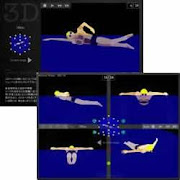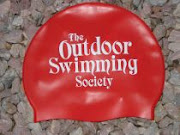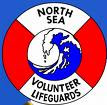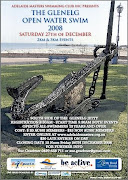 Courtesy of WOWSA, Huntington Beach, California.
Courtesy of WOWSA, Huntington Beach, California. Graham Coleman from Ireland was a swimmer as a child and then didn’t swim for decades. Five years ago, he got back into the water and starting doing marathon swimming as a complement to his work at a software company. Besides successfully crossing the English Channel while raising over £20,000 for the Central Remedial Clinic 2007, he also crossed Lake Zurich, participated in an English Channel double-crossing relay, a Lake Windermere double-crossing relay, four 10K Irish Long Distance Swimming Association swims and the Cleggan-to-Inishbofin Swim.
How did Graham do it?
How did he start from ground zero and be successful on his first English Channel attempt in 16 hours and 42 minutes? Graham’s time is not fast, but the important thing is that he accomplished his goals that he set out. Graham shared his goal-setting concepts first-hand with us:
Setting Goals to Increase Performance
Goal setting is both one of the most important components in achieving success and also one of the most commonly ignored. Often swimmers are so focused on improving their techniques, strength, flexibility and maximising the training hours, but let’s take a look at how goal setting can help endurance athletes.
Imagine if something existed which could make the early morning sessions easier to get up for, those long pool sessions easier to complete, the seemingly endless sea sessions more enjoyable and your race results as good as you’d like them to be. While setting goals certainly won’t make rice taste like chocolate, they give a purpose and help athletes stay motivated to achieve that higher level they have been striving for both in training and in the events.
So what is a goal?
A goal is a specific, measurable target which you would like to achieve in the future. Goals are the reason to get out of bed at 5 am to go training before work. Goals are the reason to go training when all you want to do is sit in front of the TV. The great thing is, setting goals is a simple process. People have been doing it for years – “I want to drop a few pounds before I go on holidays”, “I want to get my work done during the day and stop taking it home”.
The only new thing is, now we’re going to apply this logic to what for most is a life-long hobby to help us achieve the success we want.
Setting Goals
So you think setting some goals might help with your training and events, but how do you go about it? Well firstly there are a few things we have to consider. Whilst this is a simple process, the steps you take to set your goals are very important. If you end up with goals that are too general there will be no incentive to succeed. If they are too easy, you’ll struggle for motivation. Too hard and you’ll end up disappointed or even worse, injured. I use a simple four-step process to set goals:
1) ACHIEVABLE - Of course goals should stretch you and make you aim higher but too often goals are set which are too far out of reach. Goals must be feasible; otherwise the negative effect of not achieving the unrealistic goal can be seriously detrimental. If you currently swim 1,500 meters in 20 minutes, setting a goal to beat the world record may just lead to a sense of failure as the realisation occurs that this goal is not achievable.
2) DETAILED - Detailed goals make it perfectly clear what you want to achieve. Vague goals lead to a lack of focus. It’s better to say “I will reduce my 1,500 meter time”, instead of “I’d like to get faster at swimming”. All too often, general goals like the later end up as aspirations, as opposed to targets.
3) MEASURABLE- Goals and the progress towards these goals must be measurable. This
measurement not only helps you monitor progress, but also provides vital motivation as you train towards achieving your goal. Most swimming goals are measured in terms of speed or time. Taking the first example, let’s add the measurement - “I will reduce my 1,500 meter time by 60 seconds”
4) TIMED - By setting a deadline to achieve the goals, the focus and motivation is maintained. Without a time-frame, goals enter the arena of aspirations again. Taking our example, by adding a time frame we get “I will reduce my 1,500 meter time by 60 seconds by 1st July”. Comparing this to the alternate initial goal of “I’d like to get faster at swimming”, suddenly you can see the power a correctly created goal can generate
Maintaining a Focus on Goals
Keeping focus on the goals is the key to maintaining motivation.
Think of the end result – allow yourself to imagine what will happen if you achieve your goal. How will you feel when you swim faster than you ever have before? When you knock time off events you never thought possible? When you finish higher in the race than ever before? Allow yourself to imagine how you will feel when you achieve this goal, and let that feeling motivate you to train harder
Chart your progress - chart time trained, distance swam and improvements in times each. Many find that using wall charts to graph this progress gives them an extra kick when they’re feeling “what’s the point?” Suddenly you can see how much you’ve achieved so far, how far you’ve come and how you’re getting closer to your goal.
Share your goals – there’s nothing quite like people power to help motivation! Let people know what you are trying to do and who knows you might find that if they get behind you, the extra push they give could be vital to getting that step closer to your goal.
Plan to succeed – to achieve your goals, you also must create a training plan which will help you to get from where you are now, to where you want to be. Consult coaches, experienced swimmers and experts in the area. Make sure you have a plan which you know if you stick to it, will get you to your goal.
Summary
Goals are something which give us targets to strive for, Maybe this is to improve your speed for 1,500 meter or maybe this is to improve your final position in a 5-kilometer race. Whatever the case, remember to keep a focus on why you want to achieve this goal and how you will feel when you succeed and let this feeling motivate you!
Finally, remember that sometimes things happen that mean goals have to be raised or lowered - maybe you’ve had an injury and need to lower your goals or maybe you’ve had an opportunity to train more than expected and need to raise them. Keeping goals at the wrong levels can be just as damaging as having no goals at all, so make the process open to changes as required. So stay open to changing goals if your circumstances change.
Thank you very much, Graham, for sharing your secrets of success.
Copyright © 2009 by World Open Water Swimming Association




















No comments:
Post a Comment